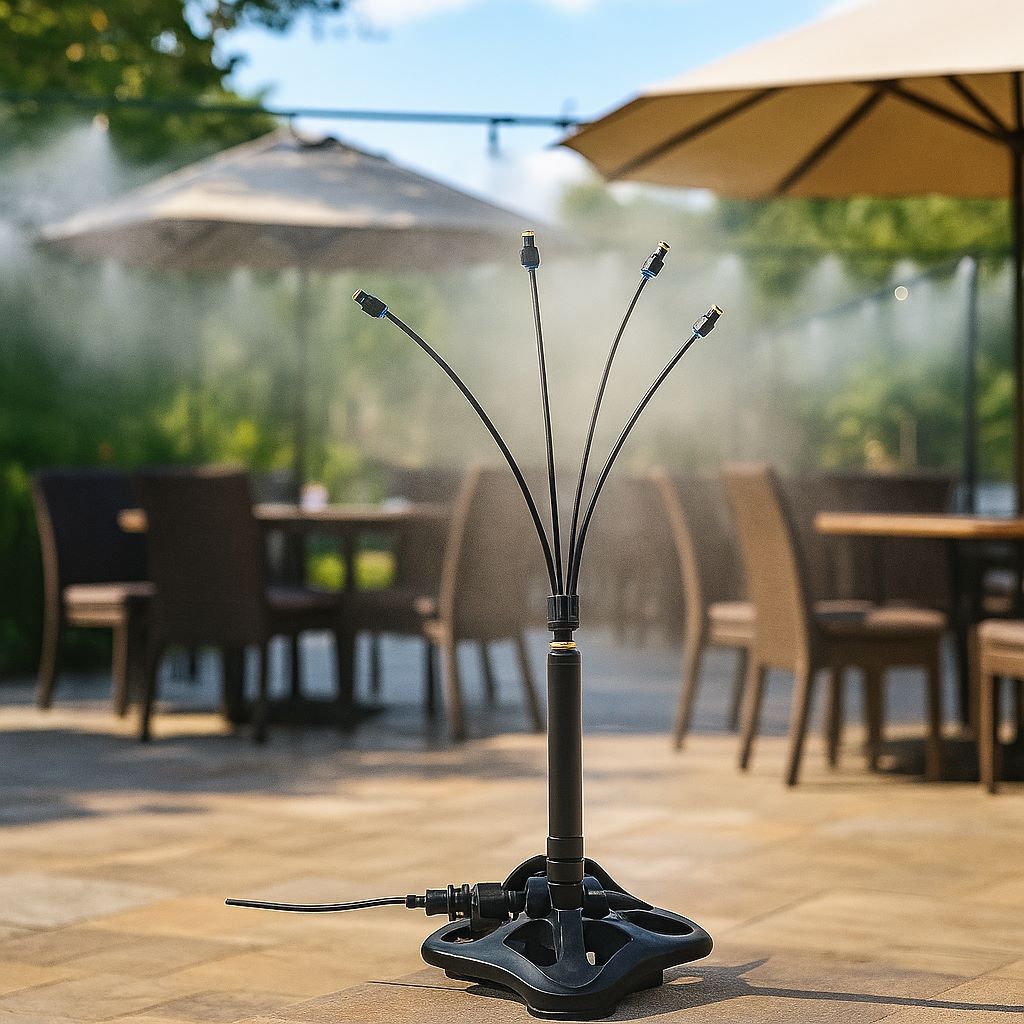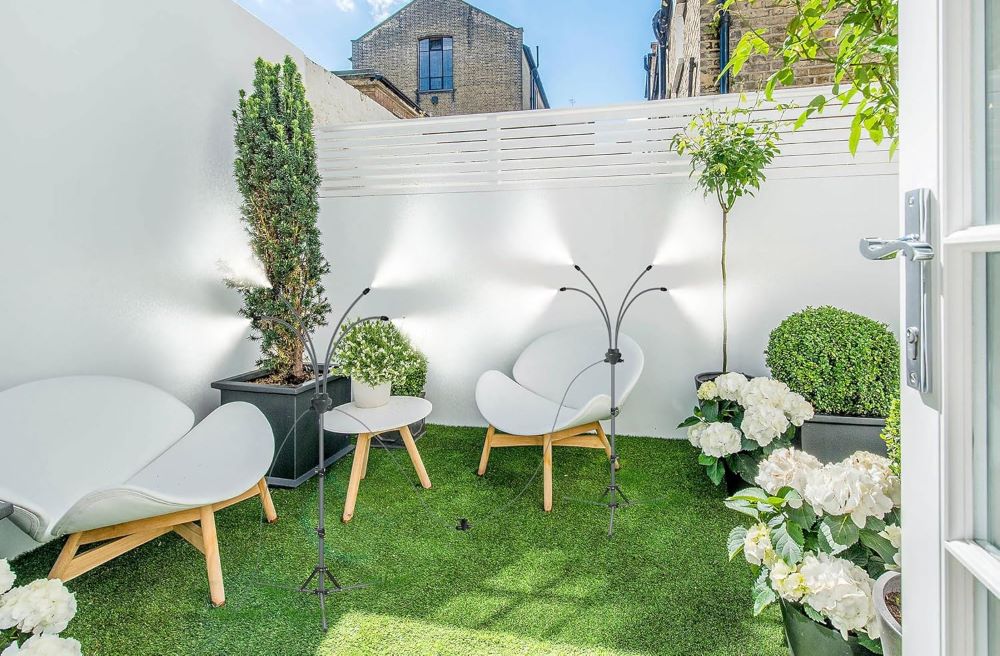Outdoor hospitality and leisure venues have always faced the challenge of balancing guest comfort with environmental conditions. In warm climates, excessive heat can discourage patrons from fully enjoying outdoor spaces. For businesses in the restaurant, entertainment, and recreation industries, the solution lies in advanced cooling technology. Mist cooling systems have emerged as a vital innovation that improves comfort, extends venue usability, and elevates customer satisfaction.
Understanding Mist Cooling Systems
Mist cooling systems function by releasing fine water droplets into the air. When these droplets evaporate, they absorb heat energy from the surrounding environment, resulting in a noticeable cooling effect. Unlike traditional fans, which simply move hot air, mist cooling systems actively reduce ambient temperatures. This principle of evaporative cooling makes them particularly effective in outdoor spaces such as patios, beer gardens, poolside areas, and amusement parks.
The effectiveness of mist cooling depends on environmental factors such as humidity and airflow. In dry climates, evaporation occurs rapidly, yielding significant temperature reductions. Even in moderately humid conditions, mist cooling can lower temperatures by several degrees. As a result, guests in hospitality and leisure settings experience greater comfort without feeling drenched, since modern misting nozzles produce ultra-fine droplets that evaporate almost instantly.
Enhancing Comfort in Outdoor Dining
Restaurants and cafes with outdoor seating rely heavily on customer comfort. Heat stress can reduce dwell times, discourage repeat visits, and ultimately affect revenue. Mist cooling systems counteract these effects by creating a more pleasant microclimate. Diners seated under misting systems enjoy a refreshing atmosphere that enhances their meal experience. In high-end dining venues, mist cooling complements aesthetic appeal by integrating seamlessly with patio design and architecture.
Zusätzlich, mist cooling systems support revenue growth by extending usable hours for outdoor seating. During peak summer months, venues often lose patrons who avoid midday heat. By implementing mist cooling, operators can attract guests throughout the day. This extended service window increases table turnover, strengthens brand reputation, and demonstrates a proactive commitment to guest well-being.
Improving the Experience in Outdoor Bars and Lounges
Outdoor bars and lounges face similar challenges. Guests often gather in these spaces during late afternoons and evenings when the heat can remain intense. Mist cooling systems maintain a comfortable environment that encourages patrons to stay longer. A cooler setting supports social engagement, as guests are more likely to order additional drinks and enjoy extended conversations. For operators, this translates directly into higher revenue and improved customer loyalty.
Modern mist cooling systems also enhance the ambiance of outdoor bars. The visible mist creates a refreshing, sensory effect that complements lighting and décor. When combined with music and carefully planned seating, the cooling sprinkler fosters a unique atmosphere that distinguishes a venue from competitors. In this way, cooling technology not only solves a practical problem but also contributes to the overall branding strategy of hospitality businesses.
Applications in Theme Parks and Recreational Venues
Theme parks and large recreational venues host thousands of guests daily. Prolonged exposure to heat can cause discomfort, fatigue, or even safety concerns such as heat exhaustion. Mist cooling systems mitigate these risks by strategically lowering temperatures in queues, rest areas, and dining zones. By maintaining comfort, parks enhance the overall visitor experience and reduce the likelihood of health incidents.
Families and groups often spend extended hours in amusement parks. Mist cooling ensures that children, elderly visitors, and other heat-sensitive groups remain safe and comfortable. When guests feel cared for, they are more likely to prolong their visits, explore more attractions, and make repeat visits. This improved customer journey directly supports revenue growth and long-term brand loyalty.
Beyond comfort, mist cooling demonstrates a venue’s commitment to safety and hospitality excellence. In competitive leisure markets, such visible investments in guest experience can be decisive in shaping visitor preferences.
 Operational and Technical Advantages
Operational and Technical Advantages
Mist cooling systems offer several operational advantages beyond comfort. They consume less energy compared to conventional air conditioning, making them a sustainable solution for outdoor venues. Their water consumption is minimal due to advanced nozzle technology, which ensures fine mist production with limited waste. As businesses face increasing pressure to adopt eco-friendly practices, the cooling sprinkler represents a responsible and efficient choice.
From a technical perspective, misting systems are highly adaptable. They can be integrated into existing architectural features, such as pergolas, umbrellas, and railings. This flexibility allows venue operators to install systems without disrupting the visual design of their spaces. Moreover, advanced mist cooling systems include automated controls for scheduling, water pressure regulation, and nozzle maintenance, ensuring consistent performance with minimal oversight.
Customer Satisfaction and Competitive Advantage
Customer satisfaction remains the ultimate measure of success for hospitality and leisure venues. Comfort plays a central role in shaping perceptions of service quality. Mist cooling directly addresses one of the most critical discomfort factors: excessive heat. By keeping guests cool, venues create positive impressions that translate into favorable reviews, word-of-mouth recommendations, and stronger online reputations.
In highly competitive markets, even small enhancements can provide significant advantages. A venue that offers effective outdoor cooling distinguishes itself from rivals that neglect this feature. Patrons will naturally gravitate toward environments where they feel most comfortable. As a result, mist cooling can become a differentiating factor that influences customer choice and loyalty.
Summary and Strategic Implications
Mist cooling systems represent a critical advancement for outdoor hospitality and leisure venues. By lowering ambient temperatures, they improve comfort, extend usable space, and enhance guest satisfaction. Restaurants, bars, and theme parks benefit directly from increased dwell times, higher spending, and improved brand perception. Operational advantages such as energy efficiency, adaptability, and sustainability further strengthen the case for adoption.
For businesses seeking long-term growth and competitive differentiation, investing in cooling sprinklers is more than a comfort feature—it is a strategic decision. The integration of cooling systems demonstrates a venue’s commitment to quality, safety, and customer experience. As the industry evolves, mist cooling will play an increasingly central role in shaping the future of hospitality and leisure environments.
Abschluss
Mist cooling technology bridges the gap between environmental challenges and guest expectations. Its role in outdoor hospitality and leisure venues cannot be overstated. By providing consistent comfort, enhancing ambiance, and supporting sustainability, mist cooling systems contribute significantly to business success. For operators in restaurants, bars, and recreational venues, embracing this technology ensures that outdoor spaces remain vibrant, profitable, and appealing year-round.



